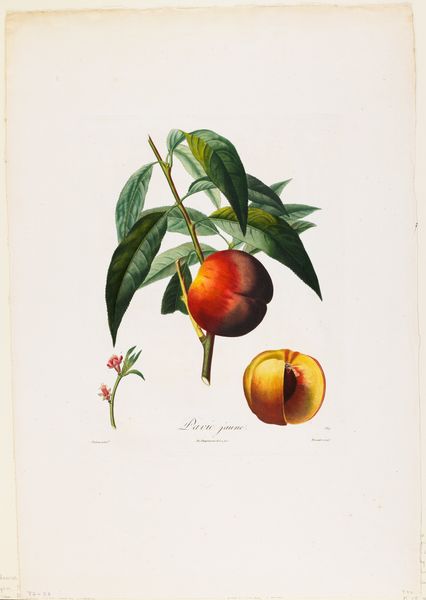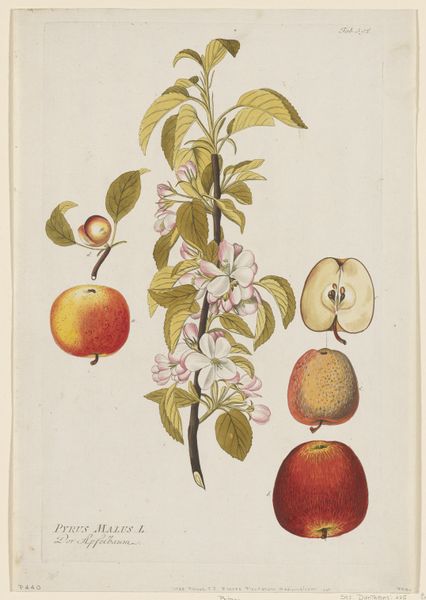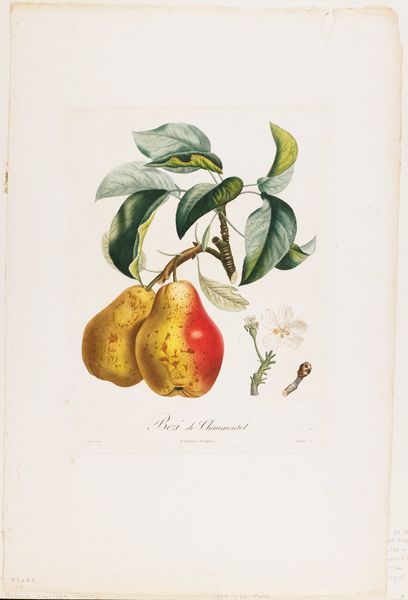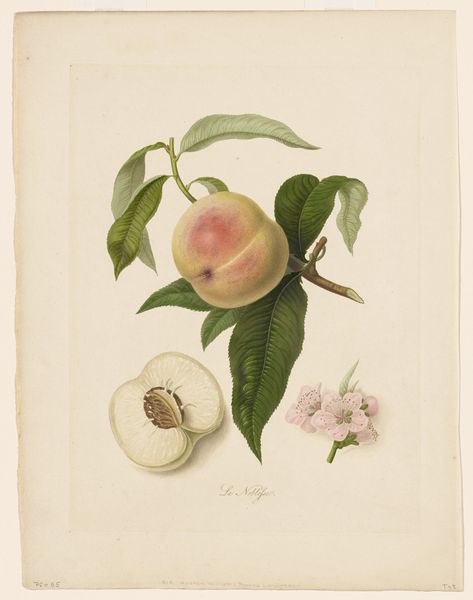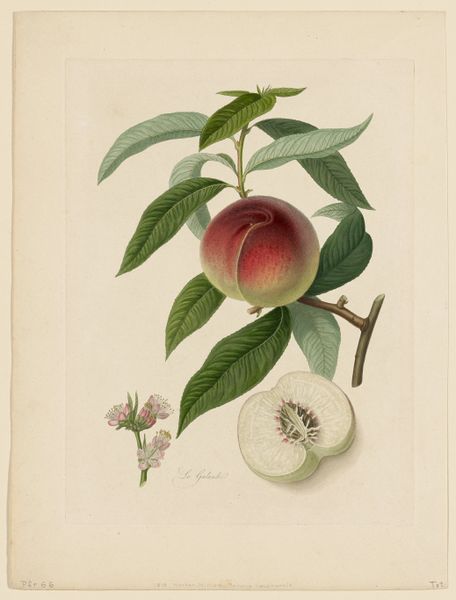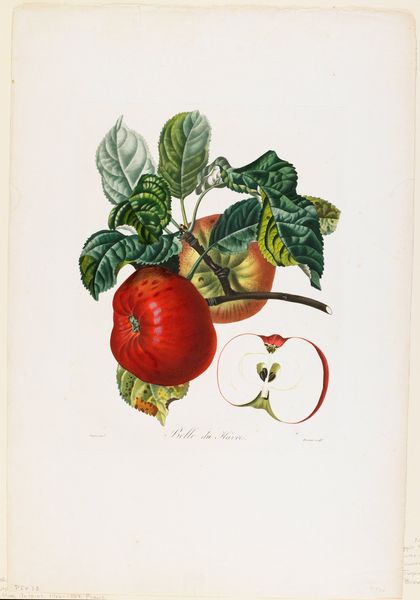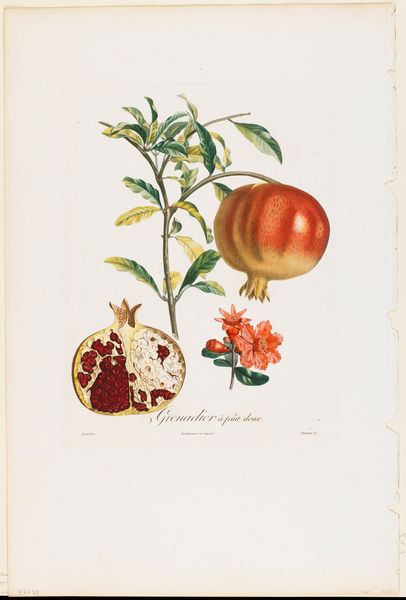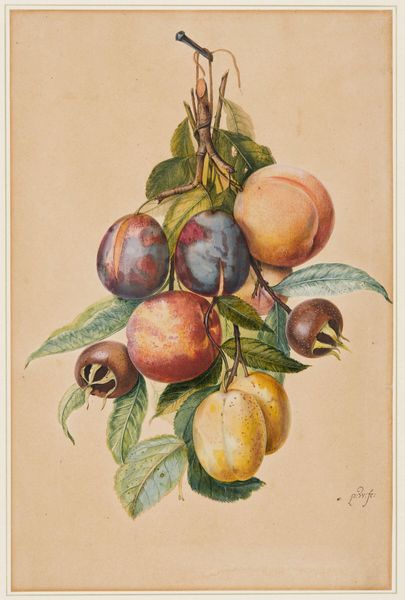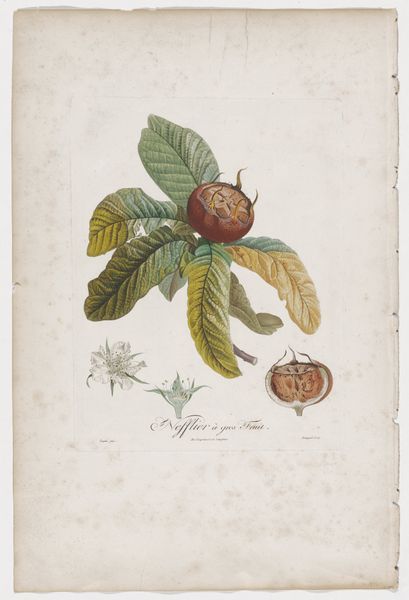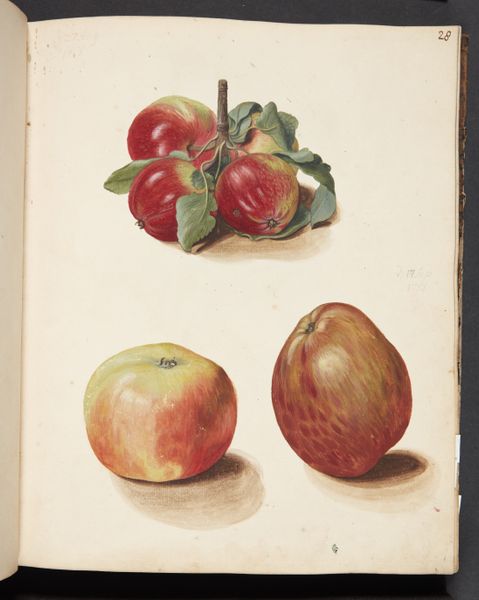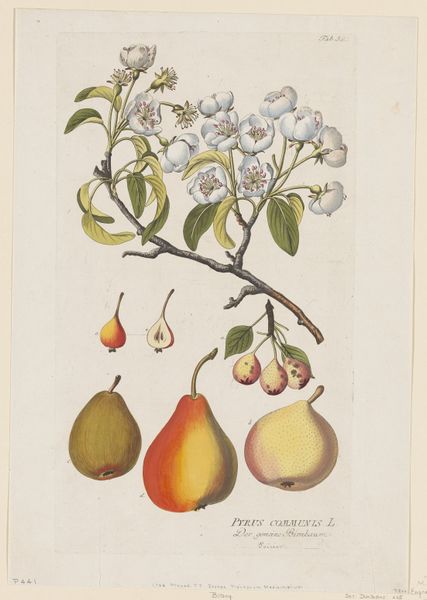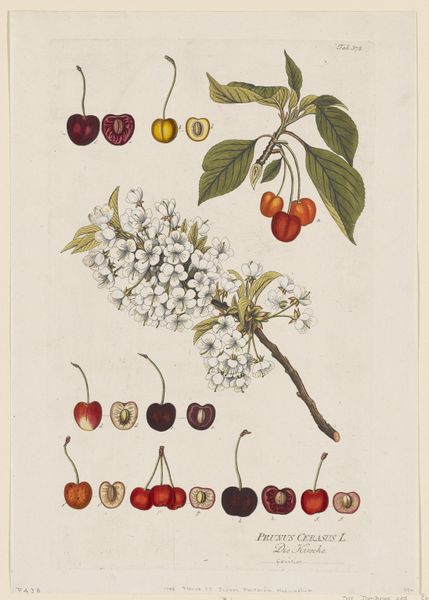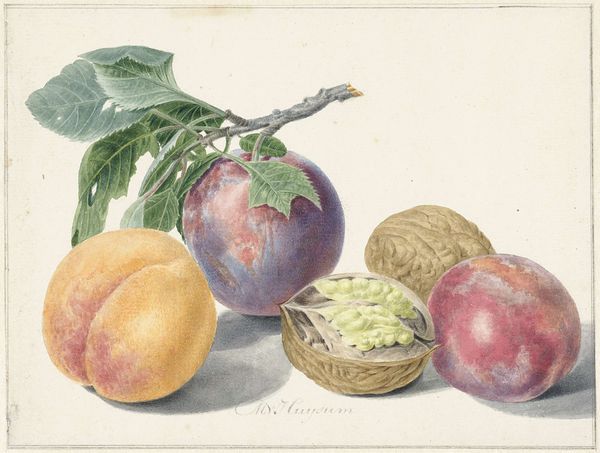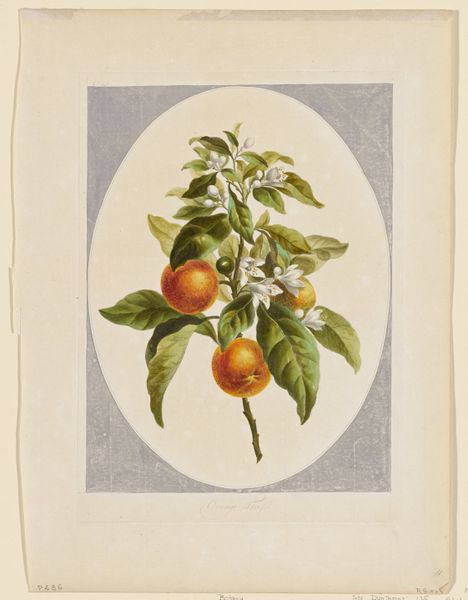
tempera, print, watercolor
#
tempera
# print
#
culinary art
#
watercolor
#
food illustration
#
romanticism
#
watercolour illustration
#
botanical art
#
watercolor
Dimensions: 11 3/4 x 9 1/4 in. (29.85 x 23.5 cm) (plate)
Copyright: Public Domain
Editor: So, this lovely print is titled "Pavie de Pompone" which means peaches. It's watercolor and tempera on paper, made sometime between 1807 and 1835. What strikes me is the precision of detail – the leaves look so real you could almost touch them. What do you make of this piece? Curator: The image sings of Romanticism’s embrace of the natural world. These peaches aren't just fruit; they are potent symbols. Consider the peach in art history; it’s often linked to ideas of immortality, abundance, and even salvation, inherited from ancient cultures. The single blossom, however, also whispers of fleeting beauty and mortality. Editor: I didn't know that! I was so focused on the almost photorealistic quality that I missed any deeper meanings. Does the cut peach carry its own significance? Curator: Absolutely. The exposed seed chamber can represent the heart of the fruit, offering a glimpse into its vital core – or, more broadly, into the essence of life itself. Have you considered how this botanical illustration reflects the cultural moment when it was created? Editor: Not really. I guess I thought botanical illustration was just…scientific. Curator: Think about the rise of scientific exploration and categorization happening during that era, coupled with the Romantic movement's emphasis on emotion and the sublime. This illustration perfectly blends both, turning objective observation into something deeply evocative. The peaches are not just catalogued; they are almost venerated. What do you take away from understanding these layers of meaning? Editor: That even seemingly straightforward images can be treasure troves of cultural and historical information. Now I see so much more than just pretty peaches.
Comments
No comments
Be the first to comment and join the conversation on the ultimate creative platform.
